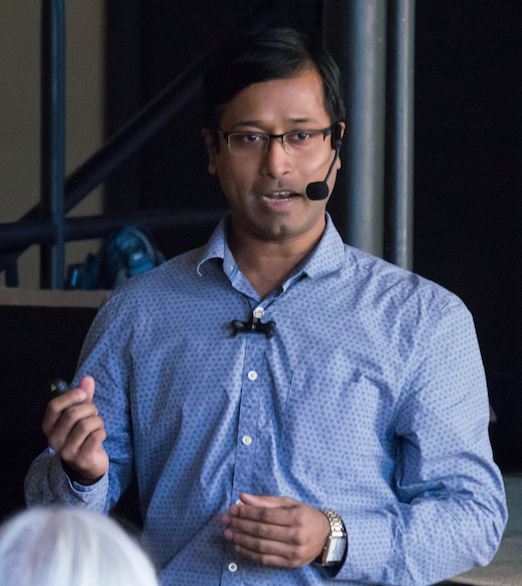
Shaon Ghosh
Astrophysicist
- EMAIL : ghoshs@montclair.edu
- AFFILIATION : Montclair State University

Dr. Shaon Ghosh is an assistant professor of physics and astronomy at the (department of physics and astronomy) of the Montclair State University. His research interests are in cataclysmic events like coalescences of neutron stars and black holes. Such events are strong emitters of gravitational-waves that are detectable by ground-based gravitational-waves detectors like the LIGO and Virgo. A subset of these events is also among the prime candidates of some of the most violent electromagnetic phenomenons in the universe like short duration Gamma-ray bursts and r-process powered Kilonovae. Coalescences of compact binaries with at least one neutron star is also a laboratory to study and constrain extreme matter. Neutron star equation of state (EoS) is a poorly constrained attribute a neutron star. Gravitational-wave observation, with a possible combination of observation of electromagnetic counterpart, can facilitate in putting strong constraints on the EoS. The prospects of a combination of gravitational-wave and EM observation hold promise for rich science in the near future. It will augment our understanding of gravity, radiative processes, magnetohydrodynamics, nuclear and particle physics, astrophysical rates, matter in extreme temperature and densities and, perhaps more excitingly, the possibility to unveil new unexplained phenomenon.
The information of many of the physical characteristics of the coalescing systems is encoded in the gravitational wave that we receive. Some of these information like, the probability that there is a neutron star in the binary or that there is tidally disrupted matter outside the final merger remnant, one can determine in real-time and inform the observers of them. Dr. Ghosh developed the infrastructure to conduct this analysis and this was used during LIGO-Virgo second observing run. This package, known and the EM-Bright package, is now used by the LIGO/Virgo collaboration to provide the source-properties information to electromagnetic observing partners via GCNs. The main challenge in providing this information in the low-latency is the fact that the recovered parameters from the template-based searches conducted by the various low-latency compact binary coalescence pipelines are prone to large statistical and systematic errors. Thus, any inference in the low-latency will have to compensate for this error. EM-Bright attempts to do that using supervised machine learning (k-nearest neighbor). Studies conducted by Dr. Ghosh and his collaborators have revealed that this improves the speed of inference significantly for low-mass binaries (which are the most interesting ones for most electromagnetic observers). This is also much more robust than the technique we used in O2, which involved characterizing the ambiguity region of the parameter space by an ellipsoid and populating this region by points, which served as surrogate for posterior samples.
Introductory astronomy for undergraduate students. Topics covered: The scientific method, Celestial coordinates, The phases of the moon and eclipses, The history of astronomy, Light and telescopes, The Solar System, The Sun, Stars: properties and types, Stellar formation and evolution, Stellar explosions: Nova, Supernova, Gamma Ray Bursts, Compact objects: White dwarfs, Neutron stars, Pulsars, Black holes, Gravitational waves, Galaxies, AGN, Quasars, Cosmology, The Universe. Book available at OpenStax.
Dr. Ghosh conducted research on detection of gravitational-wave from external triggers of short duration gamma-ray bursts during his Ph.D. He developed a technique of detection of gravitational-wave in LIGO data using a technique that coherently combines the data across three gravitational-wave detectors, thus maximizing the network's ability to discern spurious noise artificts from astrophysical signals. Link to the thesis.